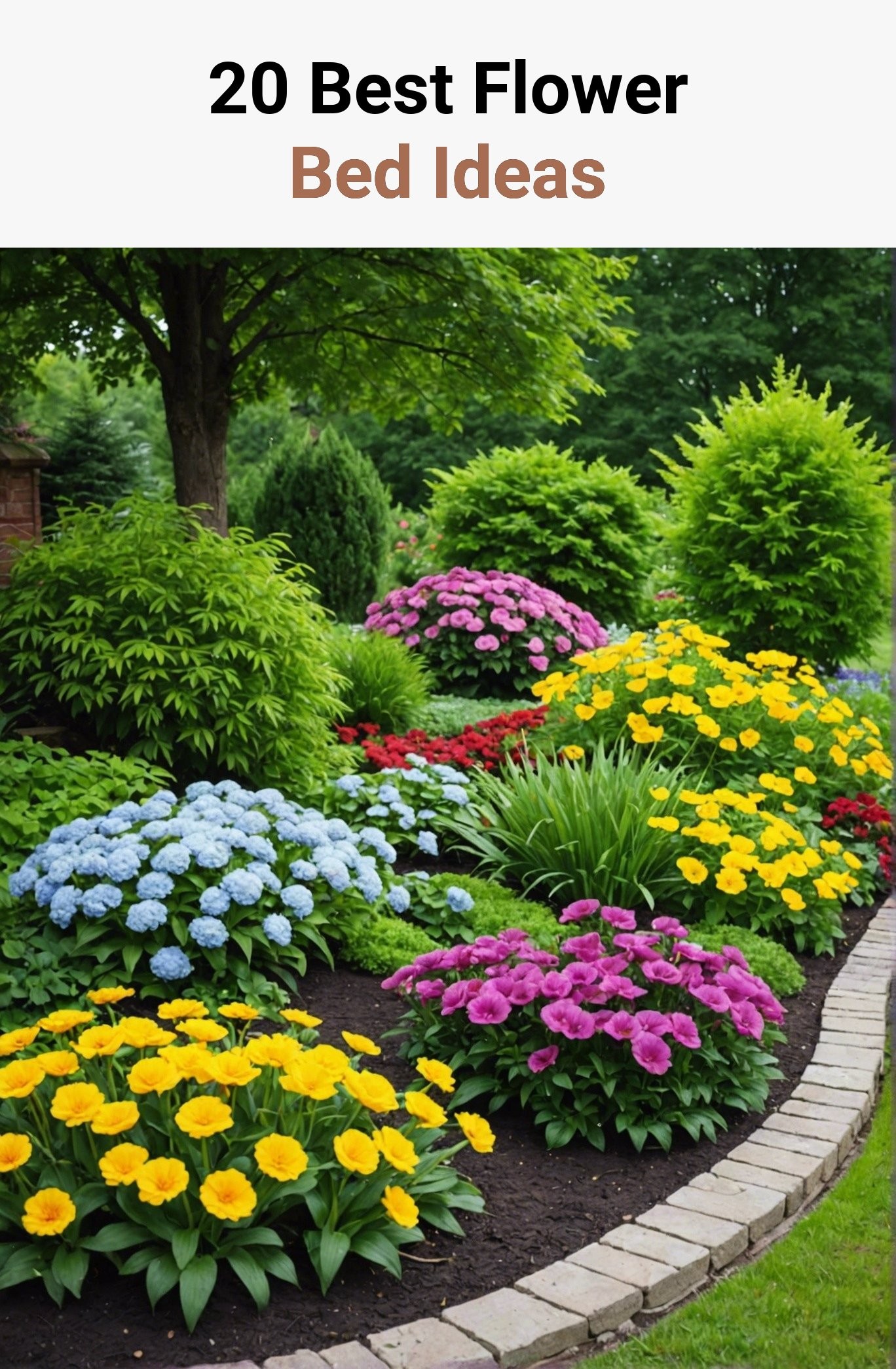Beautiful Plants For Your Interior
Beautiful Plants For Your Interior
As a gardening enthusiast, I’ve curated 20 exceptional flower bed ideas to inspire your outdoor haven. From elegant defined shapes to a vibrant explosion of annuals, discover ways to enhance your garden’s beauty and create a serene escape.
Let me guide you through these captivating designs that will transform your yard into a blooming paradise.
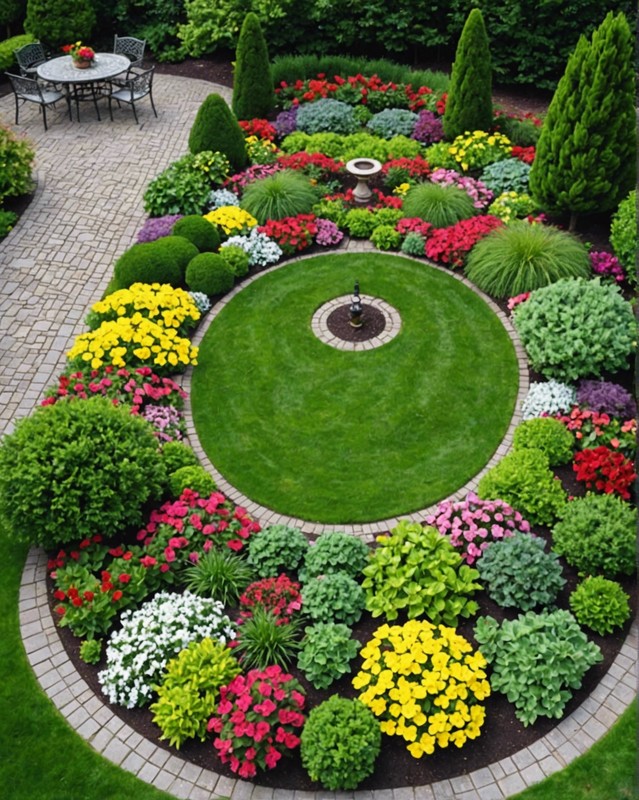
Structured patterns and lines create a sophisticated aesthetic in a flower bed.
Geometric shapes, such as circles, squares, or triangles, provide a clean and modern look.
Use edging or low-growing plants to define the shapes and create a sense of order.
Straight lines, formed by rows of flowers or pavers, add a touch of formality and can guide the eye through the garden.
Defined shapes and lines create visual interest and bring a touch of elegance to your flower bed design.
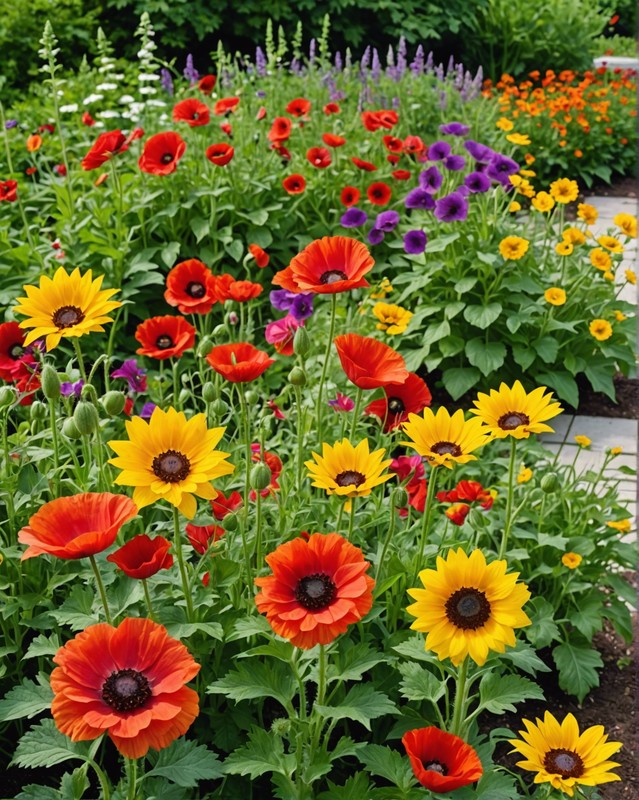
Annuals are a fantastic way to add vibrant color and lush texture to your flower beds. Their short lifespans mean that you can enjoy a constantly changing display throughout the season, as you plant new varieties to replace those that have finished blooming.
Annuals come in a wide range of colors, shapes, and sizes, so you can find the perfect ones to complement your garden’s style.
From delicate poppies to bold sunflowers, there’s an annual to suit every taste.
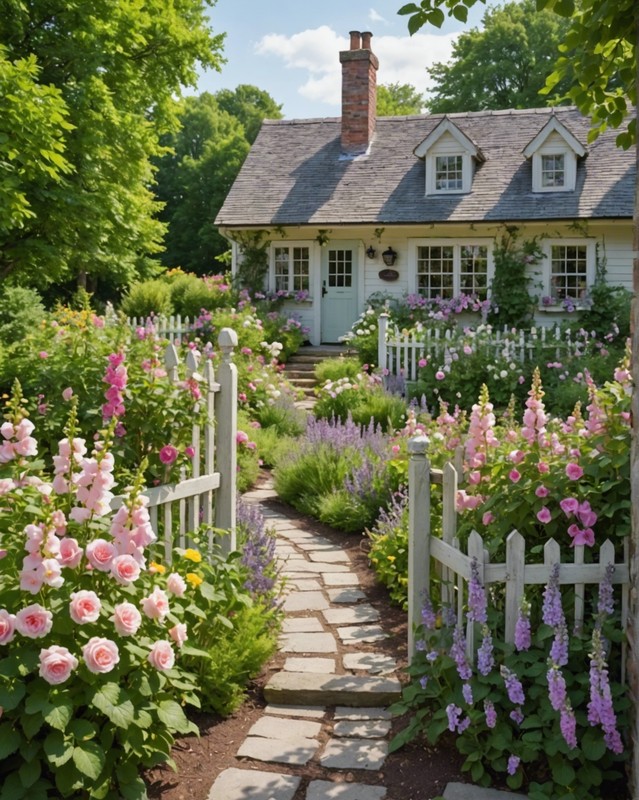
Create a quaint cottage-style garden with a charming flower bed.
Layer pastel-colored blossoms with antique roses, lavender, and foxgloves.
Choose flowers in soft shades of pinks, whites, and yellows.
Adorn the edges with picket fences or latticework trellises adorned with climbing plants.
This whimsical aesthetic will bring a touch of countryside enchantment to your yard.
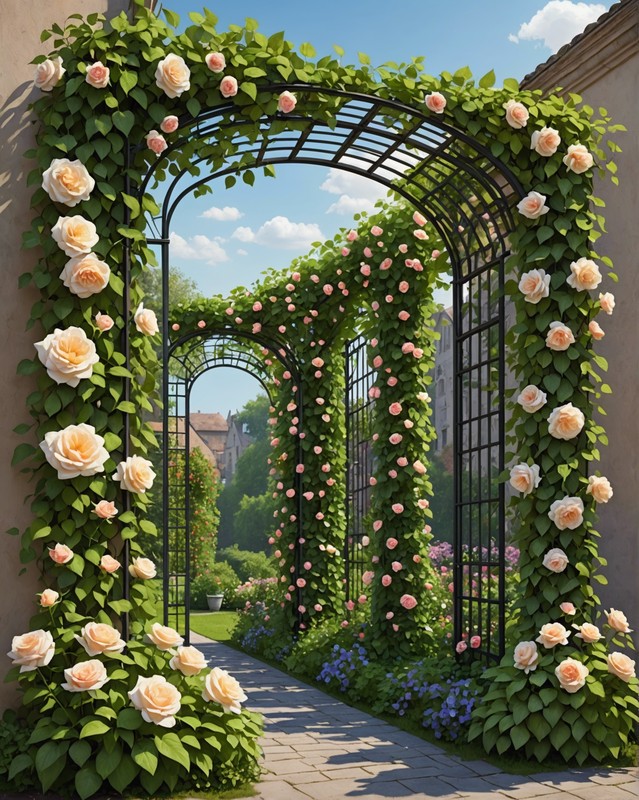
Incorporate trellises to add height and dimension to your flower bed. They provide structural support for climbing plants, creating a cascading effect.
You can choose from various trellis designs, including arched, diamond, or square.
Choose plants that complement the height and spread of the trellis, such as clematis, morning glories, or roses.
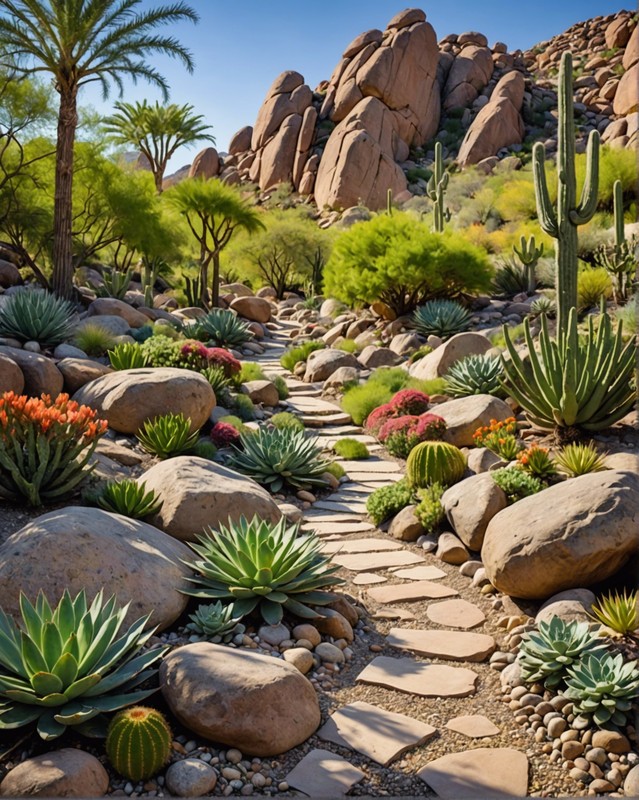
Transform your outdoor space into a serene sanctuary with a rock garden oasis. Nestled amidst towering boulders and lush greenery, this low-maintenance haven provides a tranquil escape.
Allow nature to guide your design by incorporating native plants that thrive in rocky environments.
Create a symphony of textures and colors with succulents, cacti, and creeping groundcovers. Consider adding a winding path that leads you through this captivating landscape, inviting you to linger and appreciate the beauty that surrounds you.
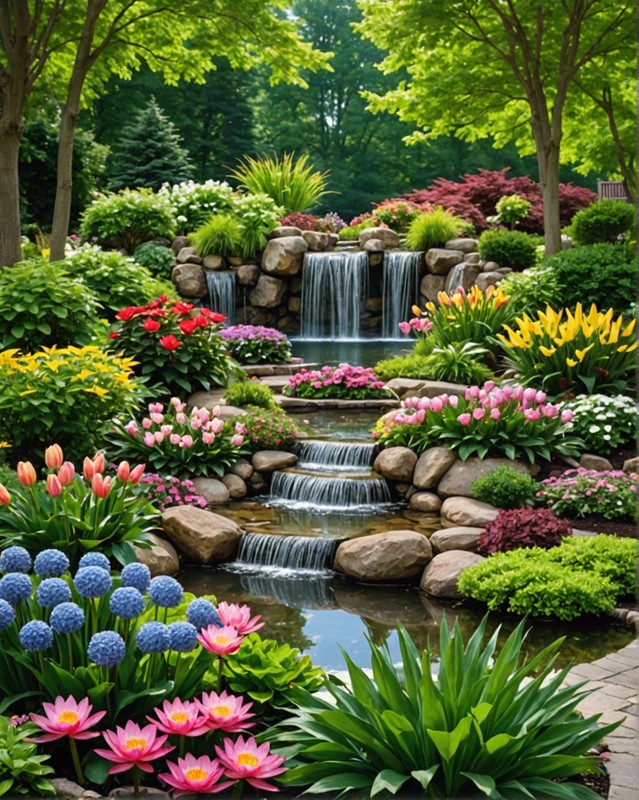
Add a touch of elegance to your flower beds with water features and blooms.
The gentle trickle of water creates a soothing ambiance, attracting birds and butterflies to your garden.
Water lilies or lotus flowers blooming in a small pond or fountain add a touch of serenity, while the moving water helps prevent mosquitoes.
Consider incorporating a small waterfall or fountain with cascading water, creating a visual and auditory delight.
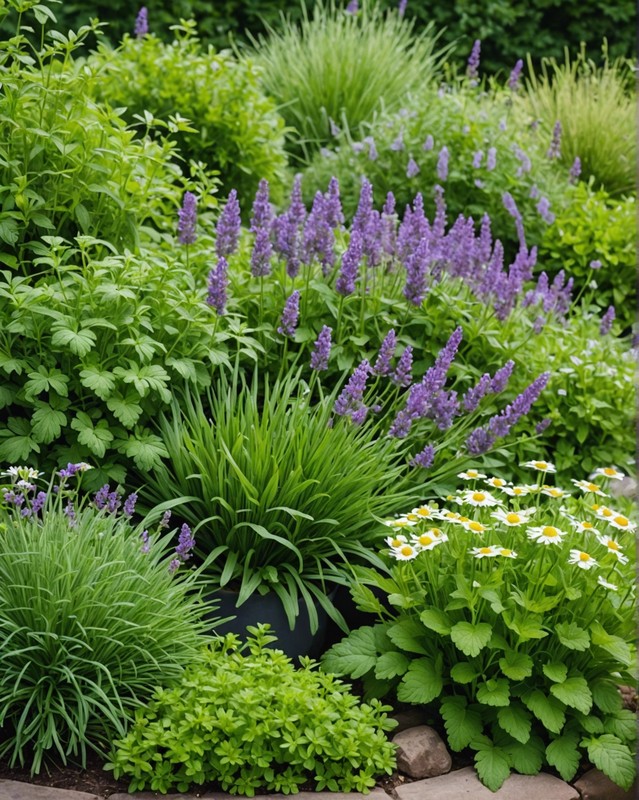
Imagine a vibrant garden bursting with an array of herbs, each offering a tantalizing aroma and culinary delight. From the refreshing aroma of basil to the pungent scent of thyme, an edible and fragrant herb garden is a haven for the senses.
Plant rosemary alongside vibrant lavender, its silvery foliage contrasting with the purple blooms, filling the air with a calming fragrance.
Mint and lemon balm thrive in shady corners, their zesty scents mingling to create an invigorating atmosphere. Add a touch of sweetness with fragrant chamomile, its daisy-like flowers attracting butterflies and bees.
A sprinkling of parsley, cilantro, and chives not only provides a burst of flavor to your dishes but also enhances the garden’s appeal.
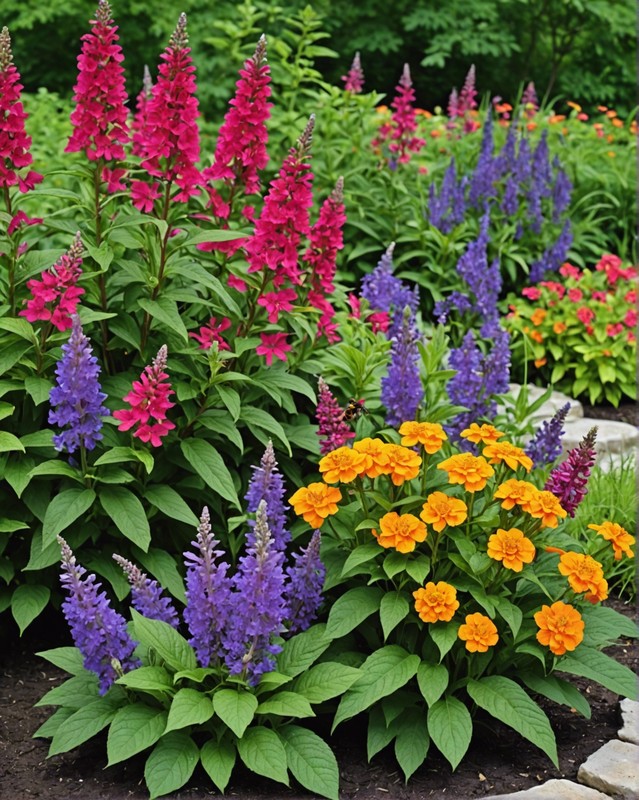
Create a vibrant oasis in your garden that attracts these delightful creatures. Choose blooms rich in nectar, such as butterfly bush, lantana, and salvia.
For hummingbirds, opt for flowers like bee balm, fuchsia, and trumpet creeper.
Plant in clusters to create a continuous source of food, and consider incorporating water features to provide hydration.
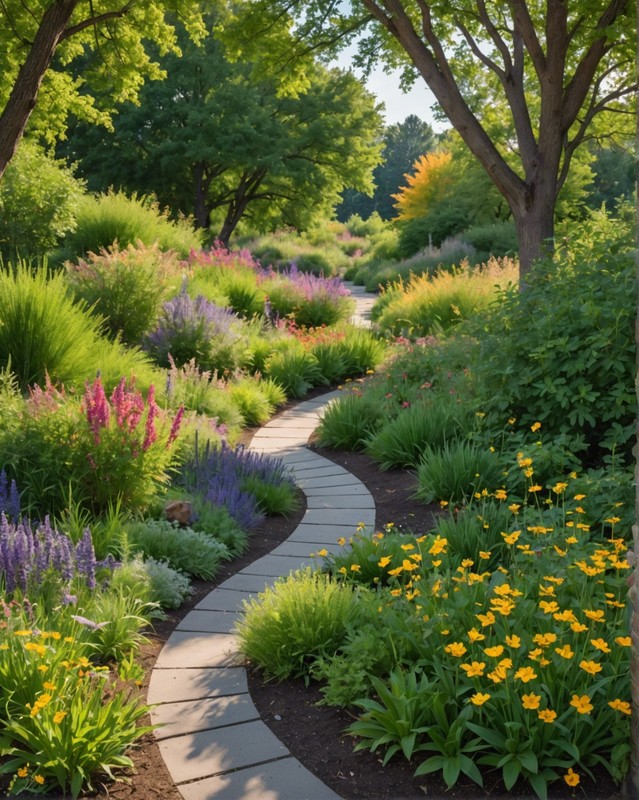
Nestled amidst thriving urban landscapes, native plant sanctuaries offer a serene escape for both humans and wildlife.
These oases showcase the beauty and ecological value of local flora, providing vital habitat for native pollinators, birds, and other creatures.
By incorporating native species into our gardens, we not only enhance the aesthetic appeal of our surroundings but also play a crucial role in preserving our fragile ecosystems.
These sanctuaries serve as reminders of the intricate connections between nature and our own well-being, inviting us to connect with the natural world and appreciate the beauty of our native landscapes.
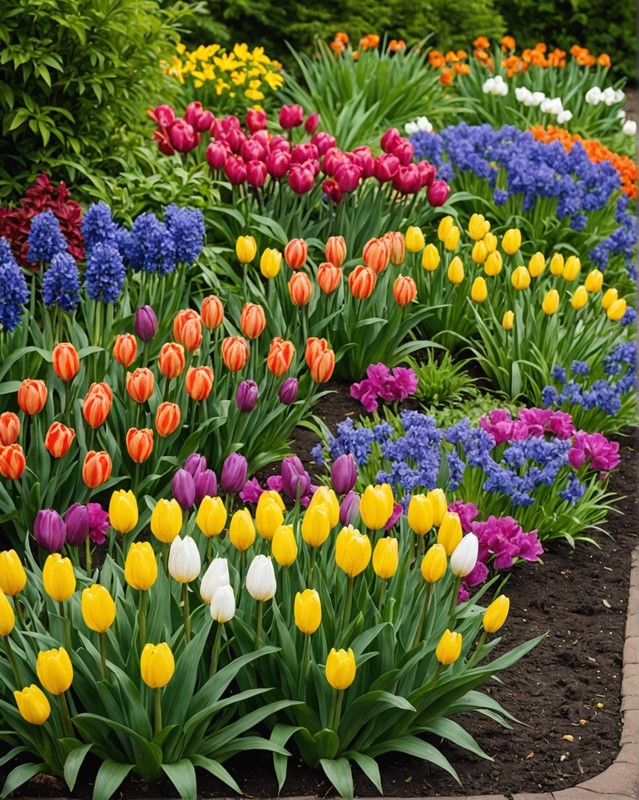
Bulbs add color and interest to your flower beds year-round.
Plant a variety of bulbs that bloom at different times to ensure a continuous display of flowers.
Spring-blooming bulbs include tulips, daffodils, hyacinths, and crocuses.
Summer-blooming bulbs include lilies, dahlias, and gladiolus.
Fall-blooming bulbs include chrysanthemums, asters, and colchicums.
By planting bulbs that bloom at different times, you can create a flower bed that is always in bloom.
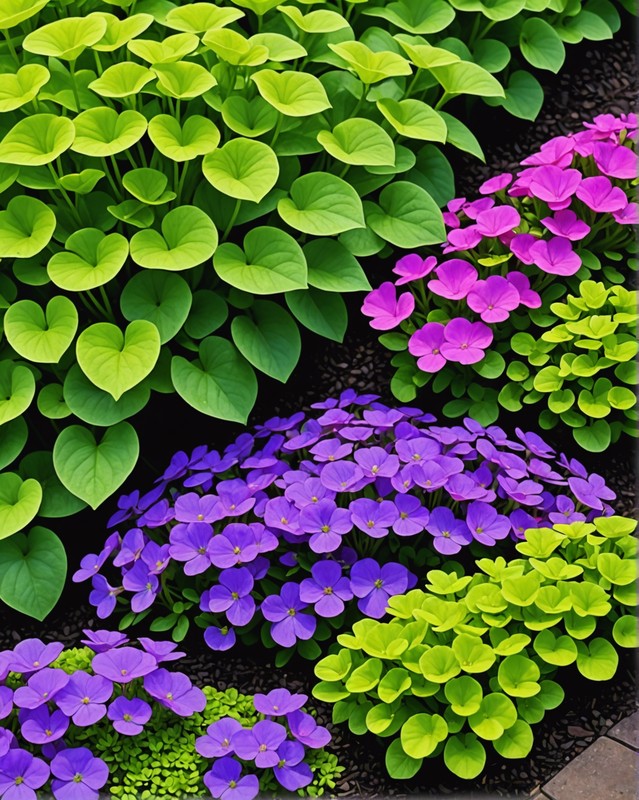
When creating flower beds, consider low-maintenance groundcovers to minimize upkeep.
These versatile plants spread quickly, filling in gaps and suppressing weeds.
Some popular options include creeping Jenny, which adds a lush, emerald-green carpet, and vinca minor, known for its vibrant purple blooms.
For sunnier spots, try sedum, a drought-tolerant groundcover with showy pink or yellow flowers.
By incorporating low-maintenance groundcovers, you can enjoy a stunning flower bed without spending hours on maintenance.
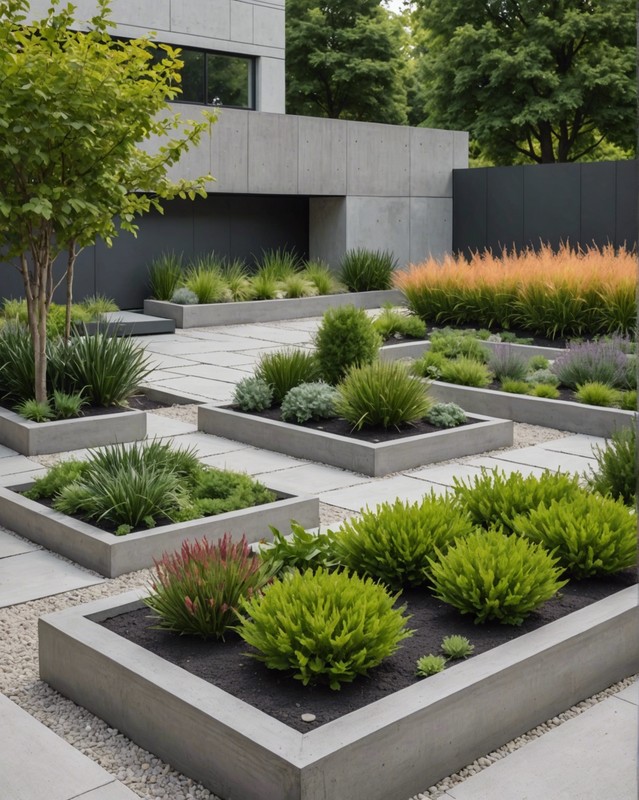
Modern and minimalist flower bed designs prioritize clean lines, geometric shapes, and a limited color palette. They often feature large-scale planters or raised beds made of concrete, metal, or wood.
Succulents, ornamental grasses, and other low-maintenance plants are commonly used to create a sleek and sophisticated look.
Monochromatic plantings or those with contrasting colors add visual interest without overwhelming the overall design.
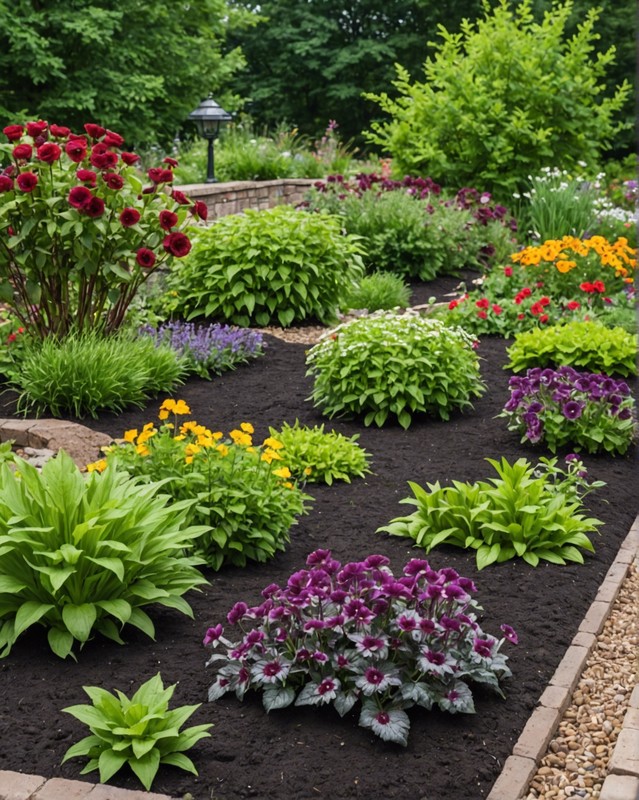
Raised beds offer a multitude of benefits that make them an excellent choice for gardeners. Firstly, they provide superior drainage, preventing waterlogging and root rot.
This is especially crucial for plants that require well-drained soil, such as roses and herbs.
Raised beds also improve soil temperature, allowing for earlier planting and extending the growing season. They are easily accessible, making gardening more convenient for individuals with mobility challenges.
Additionally, they can serve as attractive design elements, adding height and visual interest to your garden space.
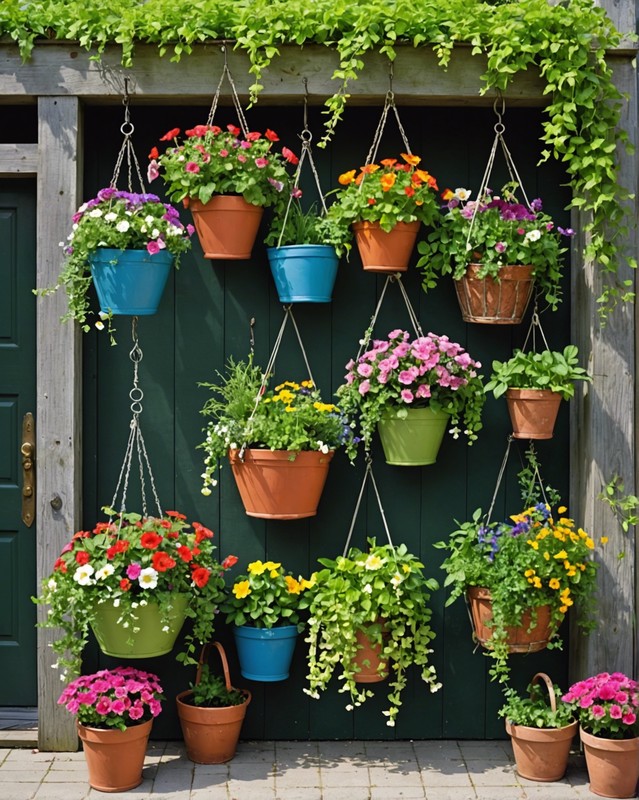
Experiment with imaginative container arrangements to add a touch of creativity to your outdoor spaces. Suspend trailing plants in hanging baskets for a cascading effect.
Create vertical gardens on trellises or walls, combining flowers with herbs or vegetables.
Use mismatched pots and containers in various sizes and shapes for an eclectic and charming display. Consider repurposing everyday objects like old watering cans, wheelbarrows, or even teacups as unique planters.
The possibilities are endless, so go ahead and embrace your creativity!
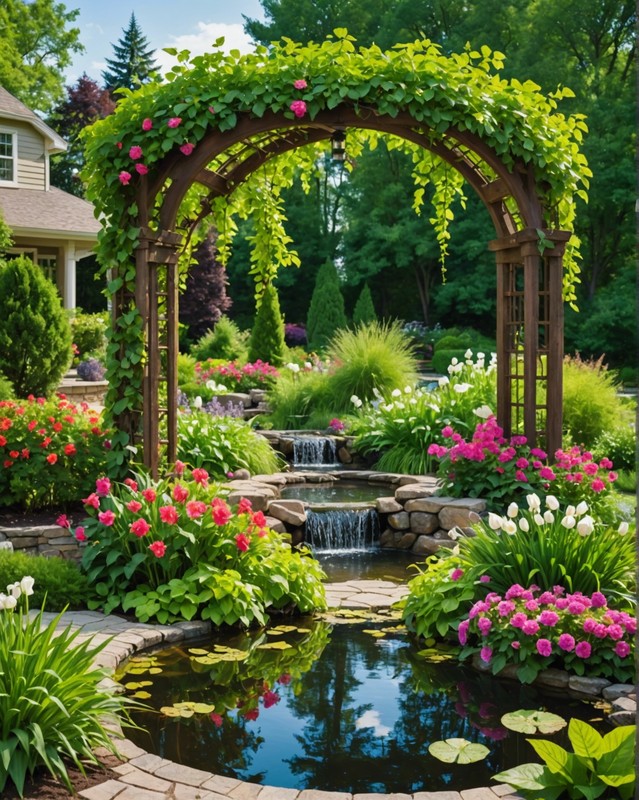
Artistic focal points elevate your flower bed from a simple planting to a captivating work of art.
Create a stunning centerpiece with a vibrant sculpture, a towering obelisk adorned with climbing vines, or a dramatic trellis showcasing a cascade of blooms.
These elements draw the eye and add a touch of elegance and intrigue to your garden.
Consider incorporating water features, such as a bubbling fountain or tranquil pond, to enhance the ambiance and provide a soothing focal point for relaxation and contemplation.
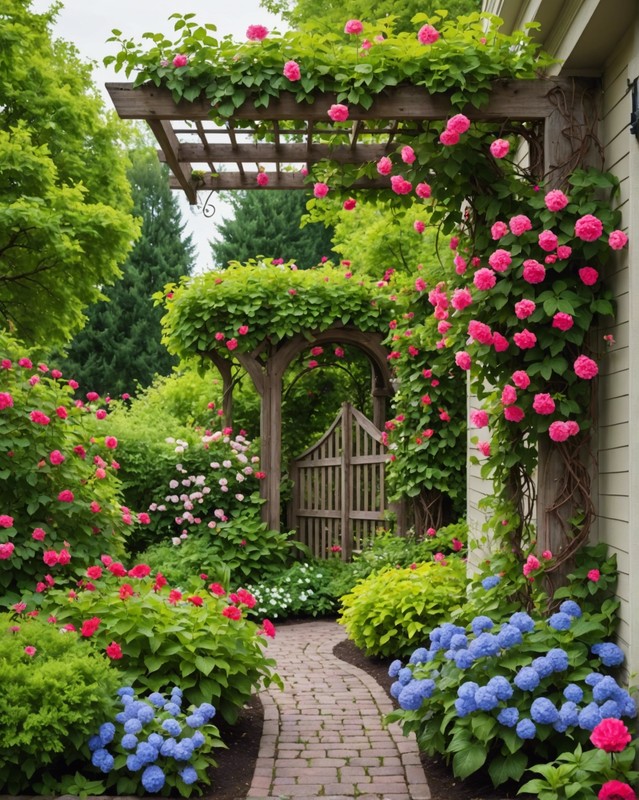
Incorporating structures into your flower bed can create a stunning focal point.
Consider adding a trellis or arbor covered in climbing vines, or a water feature such as a bubbling fountain or tranquil pond.
These structures add height and depth to the landscape, drawing the eye and enhancing the beauty of the flowers.
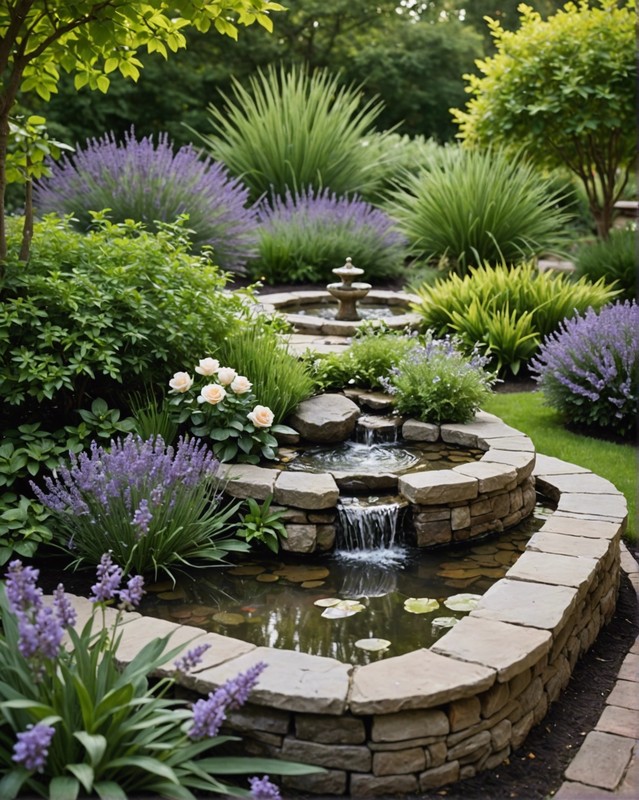
Create a serene sanctuary in your garden with a sensory garden dedicated to relaxation. Engage your senses with fragrant flowers like lavender and jasmine, whose calming scents soothe the mind.
Incorporate soft textures like velvety rose petals and feathery lamb’s ear, providing tactile stimulation.
Gentle sounds from a water feature or rustling leaves enhance relaxation, immersing you in a tranquil haven that rejuvenates both body and soul.
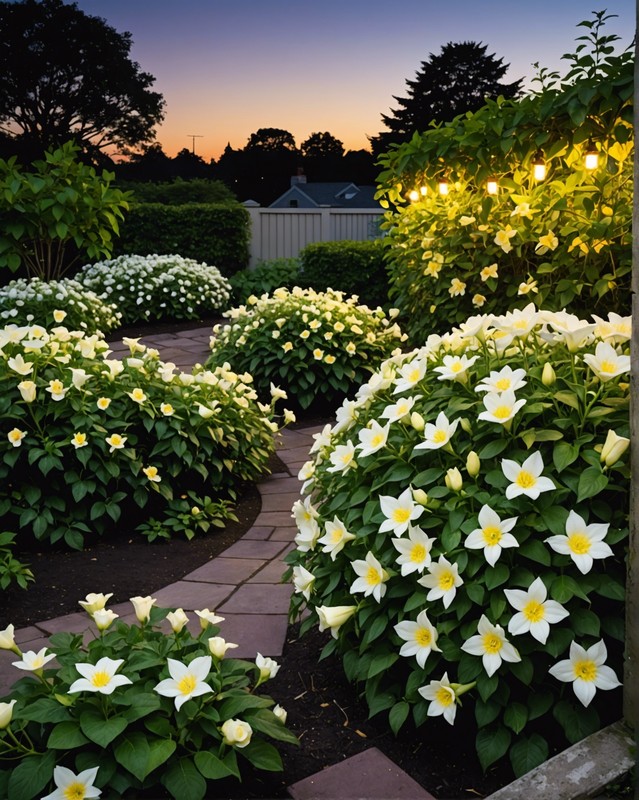
Unleash a sensory symphony in your garden with fragrant evening blooms. Plant night-blooming jasmine to envelop your backyard in a sweet, intoxicating perfume as the sun sets.
Allow moonflowers to unfurl their ethereal white petals, beckoning mysterious night pollinators with their alluring fragrance.
Choose evening primroses, whose dainty yellow blooms release a delicate, honey-like scent that will transport you to a magical world.
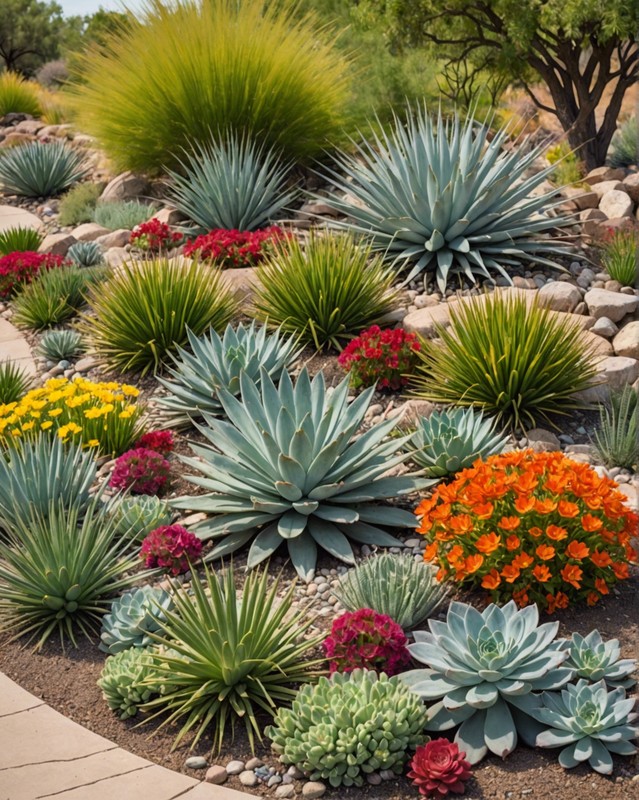
Xeriscaping, a form of water-wise landscaping, can help you create a stunning flower bed while conserving water.
Xeriscaping incorporates drought-tolerant plants, such as succulents and ornamental grasses, which require less watering than traditional flowers.
By choosing native or adapted species, you can further reduce water consumption.
Additionally, using organic mulch around plants helps retain moisture and suppress weeds, further reducing the need for irrigation.
